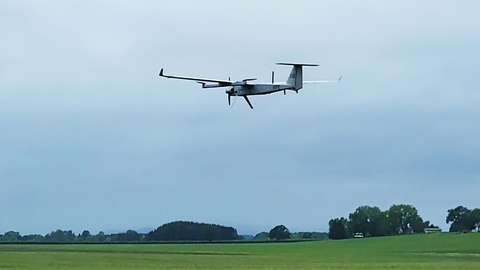AV Successfully Flight Tests JUMP 20 VTOL UAS with a Heavy Fuel Engine
Heavy fuel engine provides JUMP 20 with greater performance, efficient fuel consumption and longer operational lifespan
This press release features multimedia. View the full release here: https://www.businesswire.com/news/home/20240618747057/en/

AV successfully demonstrated a heavy fuel engine-powered JUMP 20 uncrewed aircraft system (Photo:
“The addition of a heavy fuel engine to the JUMP 20 provides global forces an unparalleled VTOL solution with a longer operational lifespan, greater performance and efficient fuel consumption. It is well suited for land and sea domains where available fuel sources could be dictated by the respective logistics support plan,” said
AV’s JUMP 20 is a vertical take-off and landing (VTOL), fixed-wing UAS with 13+ hours of endurance and an operational range of 185 km (115 mi). The engine is purpose-built for uncrewed systems and capable of running on multiple fuels and gasoline. With over 15 hp output, the high endurance, minimal fuel burn engine also requires less frequent maintenance cycles and overhauls. It is lighter than traditional gasoline engines and has an auto-start capability that delivers customers a simplified UAS requiring less operator engagement to operate and sustain.
“With successful test flights under our belt, AV is excited to continue system testing and further optimizing JUMP 20 with heavy fuel capabilities. This milestone further demonstrates AV’s ability to deliver highly mature and reliable systems capable of working in the most extreme environmental conditions,” continued Hastings.
ABOUT
SAFE HARBOR STATEMENT
Certain statements in this press release may constitute "forward-looking statements" as that term is defined in the Private Securities Litigation Reform Act of 1995. These statements are made on the basis of current expectations, forecasts and assumptions that involve risks and uncertainties, including, but not limited to, economic, competitive, governmental and technological factors outside of our control, that may cause our business, strategy or actual results to differ materially from those expressed or implied. Factors that could cause actual results to differ materially from the forward-looking statements include, but are not limited to, our ability to perform under existing contracts and obtain additional contracts; changes in the regulatory environment; the activities of competitors; failure of the markets in which we operate to grow; failure to expand into new markets; failure to develop new products or integrate new technology with current products; and general economic and business conditions in
View source version on businesswire.com: https://www.businesswire.com/news/home/20240618747057/en/
+1 (805) 750-6176
pr@avinc.com
Source:
